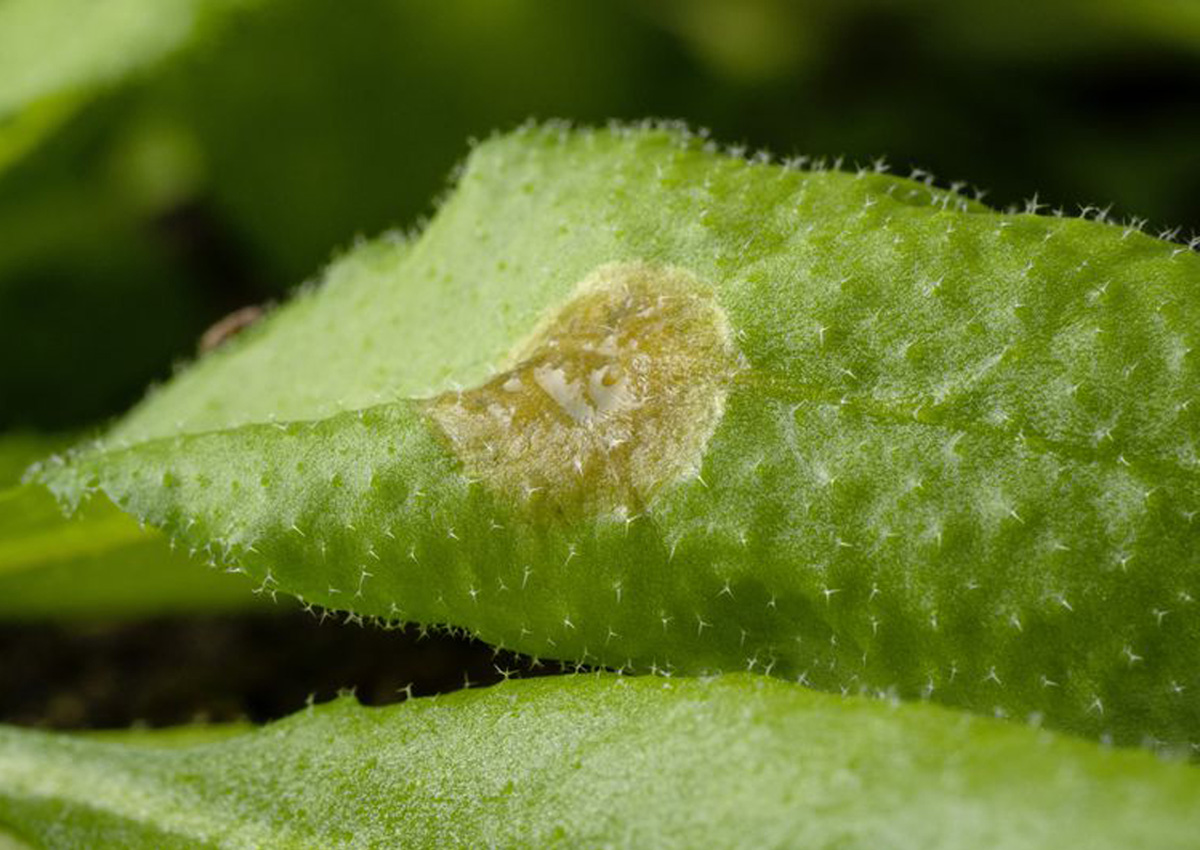
Researchers Show How Fungal Pathogen Disables Plant Defense Mechanism
June 24, 2020| |
Cabbage plants defend themselves against herbivores and pathogens through a defensive mechanism called the mustard oil bomb. When the plant tissue is damaged, toxic isothiocyanates are formed and can effectively fend off attackers. In a new study, a team of researchers from Max Planck Institute for Chemical Ecology and the University of Pretoria has now been able to show that this defense is also effective to some extent against the widespread and detrimental fungus Sclerotinia sclerotiorum. However, the pathogen uses at least two different detoxification mechanisms enabling the fungus to successfully spread on plants defended in this way. The metabolic products thus formed are non-toxic to the fungus, allowing it to grow on these plants.
Sclerotinia sclerotiorum is a devastating fungal pathogen that infects more than 400 different plant species. Wilting is the main symptom of the disease called Sclerotinia wilt or white mold. Other symptoms include white, cotton-like fungal spores that overgrow plant leaves and stalks. In agriculture, rapeseed cultivation is particularly at risk, as well as other members of the cabbage family, potatoes, legumes, and strawberries.
The researchers showed experimentally that the defense based on glucosinolates is actually effective against fungal attacks. They discovered two different strategies of the white mold fungus to detoxify the defensive substances. The first is a general detoxification pathway that binds glutathione to the isothiocyanate toxins. The second and far more effective way to render the isothiocyanates harmless is to hydrolyze them. Genes that enable the successful detoxification of these substances are called Sax genes after experiments with the model plant Arabidopsis thaliana: Survival in Arabidopsis eXtracts.
Using high-resolution analytical methods, the scientists identified and quantified metabolites produced by the fungus during detoxification. They also used mutants of the fungus in which the SaxA-encoding gene had been knocked out for comparison. This revealed that the Sax protein of the white mold fungus is active against a range of isothiocyanates, allowing it to colonize different plants of the cabbage family.
For more details, read the news article in the Max Planck Institute for Chemical Ecology website.
| |
You might also like:
- Gene from a Mycoparasitic Fungus Confers Enhanced Resistance to Sclerotinia Stem Rot in Soybean
- CRISPR-Cas9 Speeds Up Domestication of African Rice Landraces
- Precision Gene Editing Used to Increase Canola Yield
Biotech Updates is a weekly newsletter of ISAAA, a not-for-profit organization. It is distributed for free to over 22,000 subscribers worldwide to inform them about the key developments in biosciences, especially in biotechnology. Your support will help us in our mission to feed the world with knowledge. You can help by donating as little as $10.
-
See more articles:
-
News from Around the World
- Redefinition and Harmonization in Biotech Regulation Necessary, Experts Say
- Scientists Unlock Secrets of Teff, Ethiopia's Superfood
- GM Yeast Found to Effectively Control Tsetse Flies
- Oxitec's Friendly™ Mosquito Approval Published in Federal Register; Unanimous Approvals in State of Florida
- Sugar from GM Sugarcane at Par With That from Conventional Sugarcane
- Researchers Show How Fungal Pathogen Disables Plant Defense Mechanism
- UK Environment Secretary Proposes Use of Gene Editing to Decrease Farmers' Reliance on Pesticides
-
Research Highlights
- Researchers Pinpoint Genes Involved in Rice Blast Resistance
-
Plant
- Experts Report a Multi-functional Genome Editing Method for Plants
-
Health
- MIT-Engineered Peptide Targets COVID-19
-
Read the latest: - Biotech Updates (November 12, 2025)
- Gene Editing Supplement (October 29, 2025)
- Gene Drive Supplement (February 22, 2023)
-
Subscribe to BU: - Share
- Tweet

